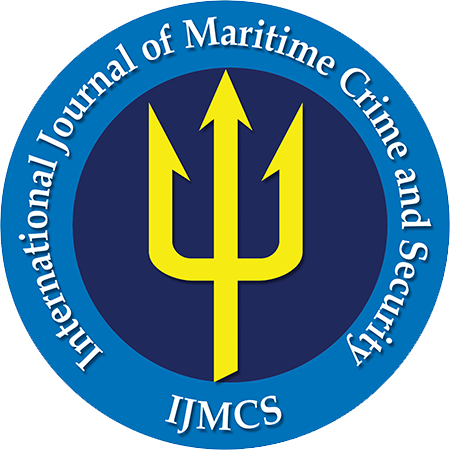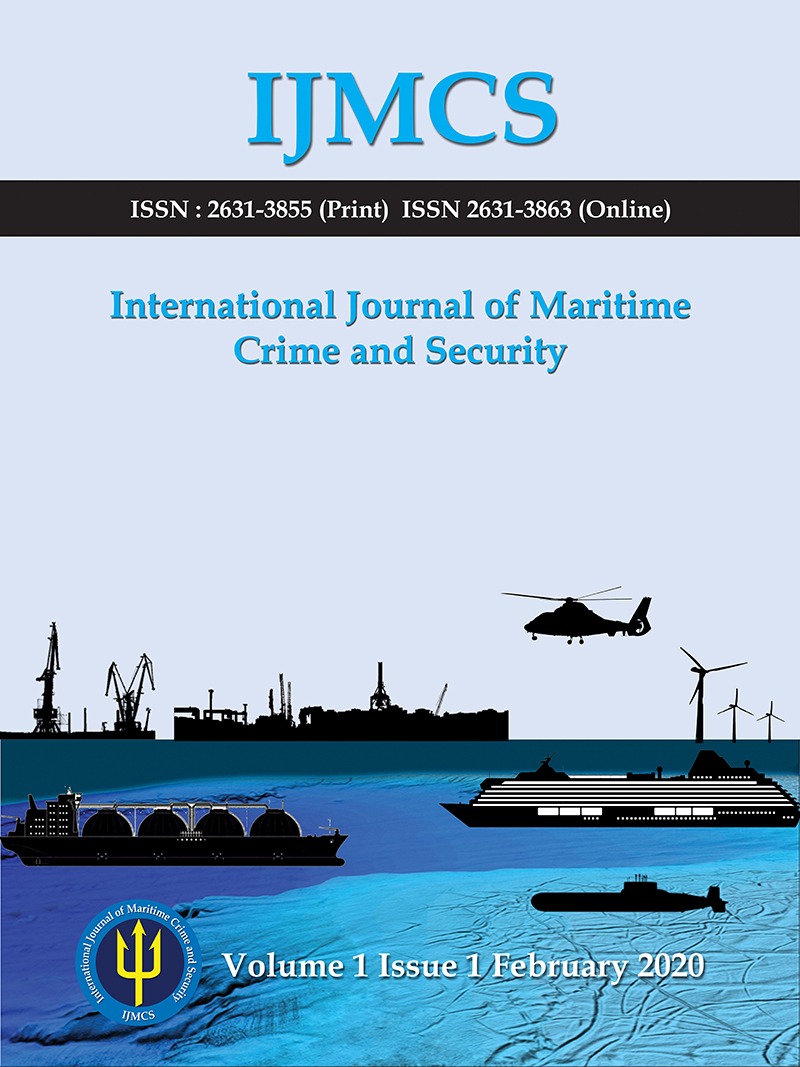Unmanned aerial vehicle; drone; port security; ISPS Code; BREXIT
Purpose: This paper carries out an investigation into the use of unmanned aerial vehicles (UAVs), also known as drones, in border security and their ability to enhance existing security measures in Kuwait’s ports and borders and also along borders of the United States. Considering UAVs are currently deployed by the military as well as by private companies and individuals throughout the world, including Kuwait, very little scholarly work has addressed the use of UAVs in advancing port security. The purpose of this paper is to appraise the advantages and disadvantages of UAVs in the context of improving Kuwait’s and the US port and border security.
Research Approach: The main research question proposed is how can UAVs be effectively utilised to enhance port security? Both primary and secondary data were collected. The primary data collection involved both qualitative and quantitative methods. Primary data was collected using an online survey issued to 66 port-related respondents and from five semi-structure telephone interviews, with a subset of the survey respondents.
Findings and Originality: The primary data analysis revealed that port officials are aware that UAV technologies can bring a significant improvement to their security. Still, there are risks associated with the implementation of such a system, especially concerning the threat of terrorist organisations and cyber security. Therefore, it was concluded that, for the successful implementation of this technology in port security, a proper framework needs to be set in place. Recommendations for this framework are proposed in this research. The interview findings further explain the current security concerns of ports, the manner in which UAVs can contribute to port security and the associated risks and formulate a series of recommendations concerning these risks. The respondents unanimously agreed to the registration system of all UAV users, similar to motor vehicle licence plates, indicating a higher level of control could diminish the risk of unauthorised aerial breaches of port security using drones.
Research Impact: The research addresses a significant gap in the literature on the deployment of an emergent technology in ports for the purposes of surveillance in advancement of both safety and security.
Practical Impact: The study contributes to practice by making the following recommendations: introduce the use of UAVs to enhance port security, especially for monitoring and surveillance purposes; ensure pilots are certified with the Basic National UAS Certificate for small Unmanned Aircraft (BNUC-S); introduce a system whereby all UAV flights, their pilots and training are recorded on a central data management system, such as airfleetmanager; improve legislation regarding port security in order to encompass cases of cyber security and information sharing security, acknowledging the risks and provide recommendations for their reduction; include a focus on port security in the main cyber security frameworks and make governmental bodies accountable for port security.
Download Full Text Here
- Bernard, K. (2015) Port Security: Threats and Vulnerabilities. Laurea University of Applied Sciences. Unpublished thesis.
- Bergen, P. L., (2014). Drone Wars. Cambridge University Press.
- Berger, S. (2015) Mexico Drug Trafficking: Drone Carries 28 Pounds of Heroin Across Border To US. IB Times. Retrieved 04/07/2016, from http://www.ibtimes.com/mexico-drug-trafficking-drone-carries-28-pounds-heroin-across-border-us-2051941
- Bichou, K. (2004) The ISPS Code and The Cost of Port facility Compliance: An Initial Logistics and Supply Chain Framework for Port Security Assessment and Management. Journal of Maritime Economics & Logistics, 6, (322–348)
- CRS Report for Congress (2010). Homeland Security: Unmanned Aerial Vehicles and Border Surveillance. Congressional Research Service.
- Dedrone (2016) Why do you need a drone detection system? Available at:
- http://www.dedrone.com/en/application/reasons-why-drone-detection (Accessed: 24 August 2016).
- Huang, H., (2010). Autonomy Levels for Unmanned Systems. The national Institute of Standards and Technology (NIST).
- Juttner, U., Peck, H. and Christopher, M. (2003) ‘Supply chain risk management: outlining an agenda for future research’, International Journal of Logistics: Research and Applications, Vol. 6 No.4, pp. 199-213
- Mullany, A. (2015) Drone sparks alarm in Goulburn’s maximum-security prison. The Daily Telegraph. Retrieved 04/07/2016, from
- http://www.dailytelegraph.com.au/news/nsw/drone-sparks-alarm-in-goulburns-maximum-security-prison/news-story/acd1867efc7f3e62851da50859942165
- Nincic, D. (2005) ‘The Challenge of Maritime Terrorism: Threat Identification, WMD and Regime Response’ The Journal of Strategic Studies, Vol. 28, No. 4, 619- 644
- Parfomak, P. & Frittelli, J. (2007) ‘Maritime Security: Potential Terrorist Attacks and Protection Priorities’, CRS Report for Congress, 9 January 2007
- Pinto, C.A. & Talley, W.K. (2006) ‘The Security Incident Cycle of Ports’, Maritime Economics & Logistics, 8 (267-286)
- Raymond, C.Z. (2006) ‘Maritime Terrorism in Southeast Asia: A Risk Assessment’, Terrorism and Political Violence, 18:2, 239-257
- Russon, M. (2013) Drones Used to Deliver Drugs to Prisoners in Canada. Retrieved 04/07/2016, from http://www.ibtimes.co.uk/drones-delivers-drugs-prison-canada-contraband-inmates-526190
- Synergia (2016) Counter-UAV solutions.
- Talas, R. (2010). ‘The Efficient Relationship between Residual Security Risk and Security Investment for Maritime Port Facilities.’ (Unpublished Doctoral thesis, City University London)
- Talas, R. (2016) ‘Transport Security” in Mangan, J. and Lalwani, C. “Global Logistics and Supply Chain Management”, Wile



